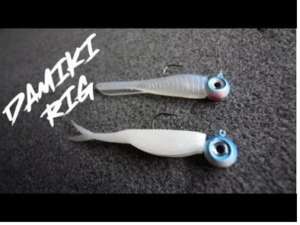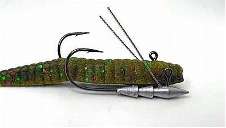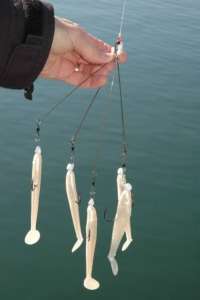There is no doubt that the topic of forward-facing sonar has flooded the industry. It is definitely a tool that can help eliminate water, locate fish, and allow the angler to observe fish behavior. However, many people assume that having this tool will guarantee an angler to catch fish if they purchase it. The truth is that it’s not that easy, but it does increase an angler’s chances. To prevent frustration from happening when a fish follows your bait all the way to the boat and doesn’t eat it, here are some tips that will help you.
Time Management and Forward-Facing Sonar
Scoping can be a love hate relationship. It is easy to waste a full day and not have much to show for if you aren’t careful. One of the best pieces of advice we can give to a fellow angler about Forward-Facing sonar, is not to spend too much time on a single fish or group of fish. If the fish doesn’t bite within the first few presentations move on. Normally a fish is going to bite right out of the gate if it’s going to bite. Another great thing that Forward Facing Sonar can do is save you a bunch of time. If you pull up on a spot and don’t see them move on. Don’t waste a lot of time in an area where you don’t see life.
Cold Water Lure Presentation
Fish tend to suspend in the winter, which is why lures like suspending jerk baits and Alabama rigs work well. Fish swim upward most of the time to eat these lures. When looking at forward-facing sonar, groups of fish will often sneakily stalk pods of baitfish from underneath. Because of this, it can be important to keep your lure above the fish during the winter. As avid anglers we have seen fish swim from 20 ft or more below the lure come up and eat. At times it can be beneficial to speed up your retrieve when a fish is following your lure to make it look like it is trying to escape from the fish.
Look for fish higher in the water column
Sometimes fish that are higher in the water column can get overlooked and, in some instances, be easier to catch. A lot of times a fish that are higher in the water column, or just below the surface are either actively feeding or on the hunt for something to eat. This then makes your lure a prime target for them. In a lot of instances, it is a lot easier to present your lure to these fish as well. Something to keep in mind though is not to be closed-minded on the equipment you choose to use. Innovation is coming so keep your eyes open for jig heads or lures that mimic what baitfish or the prey you are trying to mimic but are heavier in weight. There are several companies that make walleye jig heads that weigh 1oz or even greater, who says you can’t use a walleye jig head to catch a bass on, this is just one lure or option for something that will help you present you bait in a faster more efficient way. A heavier lure not only can be something to keep in mind for those deeper fish but that can be very effective on high ones as well. A heavier lure or head allows you to fish the bait faster and can potentially then give you a reaction when something slow might not. Where sometimes the slower falling applications can just be to slow or maybe it gives them too good of a look. This can also work in the exact opposite direction as well.
If you don’t see your lure, reel it back in
When looking at fish with forward-facing sonar, always remember that you want to be able to see your lure while keeping the transducer pointed toward the fish. If you can see the fish clearly but you can’t see your lure at all, chances are your lure isn’t where it needs to be. Always keep the transducer pointed toward the fish and keep casting toward them until you can see your lure. It takes practice, but if you can learn to cast exactly in the beam of the sonar several times in a row then you will maximize your fishing time and bite efficiency.
Top lures for forward-facing sonar in the winter
Damiki Rig/Hover Rig


(Photo Courtesy of Bass Resource)
A Damiki rig has been popular for several years now and has gained popularity recently with the topic of forward-facing sonar. The hover rig is a new technique used as a more finesse approach for fish seen on forward-facing sonar. Pair these lures tend to be better paired on a spinning rod with 12lb-20lb braid with a 6lb-12lb fluorocarbon leader. A common way to use each of these lures is to cast it 10-20 feet past a fish and swim it over the top of them while slightly twitching your rod tip. A damiki rig can also be very effective fishing vertical over fish as well. When using this application, you will want to find the size of head that fits the depth of water you are fishing the best. When you find the fish, you want to drop your lure to the fish until you notice they start to react to it. At that point it’s about figuring out how they want the bait that day sometimes they want it hopped up and down, other times they want you to just lift it away from them slowly. You will just have to figure out what they want that day.
Swimbait/Alabama rig

An Alabama rig is one of the most popular lures when the water cools off. Some state rules and regulations and some tournament regulations only allow a certain number of hooks or may prohibit them, so always remember to be aware of those. An underspin or single swimbait is a great alternative to an Alabama rig if your state or tournament does not allow it. An Alabama rig can be used on braided line (50-60 pound recommended) or fluorocarbon/monofilament (20-25 pound recommended) on a baitcasting setup. A single swimbait or underspin can be paired on a spinning or baitcasting rod, usually tied to 8lb-16lb test. Simply cast these lures past the fish and keep a slow and steady reel retrieve keeping it above the fish. When using an Alabama rig, occasional twitches of the rod tip or reel handle can trigger a bite.
Jerkbait

Jerkbaits are a great lure to trigger fish in colder water conditions. Some may ask how to select which jerkbait to choose, forward facing sonar makes it easier to make that decision than ever before. You can now instantly see the depth at which the fish are at that day and then make your decision based on that. Jerkbait fishing is traditionally a slower retrieve, but still has an erratic look to it. Simply cast the lure past the fish using a “twitch, twitch, pause method”. Pair this lure on a baitcasting setup with 10lb-14lb fluorocarbon or monofilament. Something that you need to keep in mind is what your bait is doing. Traditionally you want your jerkbait to be sinking just a little bit. A lot of jerk baits need to be adjusted out of the box. The best thing you can do is either keep a spool of lead wire or lead suspending strips in your boat. If your jerkbait is floating add either some lead wire (to the front hook) or pieces of suspend strip to the front portion of the bait, traditionally between the first and second hook.
Spoon/Ice Jig

An ice jig and jigging spoon are great lures that can trigger a reaction bite in deep schools of bass. The benefit of having a heavier lure such as these is the rate of fall. This will allow your lure to get to fish that are deeper a lot faster. These two baits traditionally are fished with a lifting or hoping action. When you jig the lure up and down you want to make sure that you allow the lure to fall back to the level that the fish are setting. These lures pair great on baitcasting setups with 12lb-16lb fluorocarbon line.

